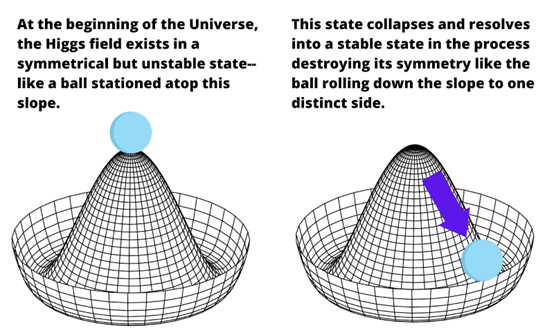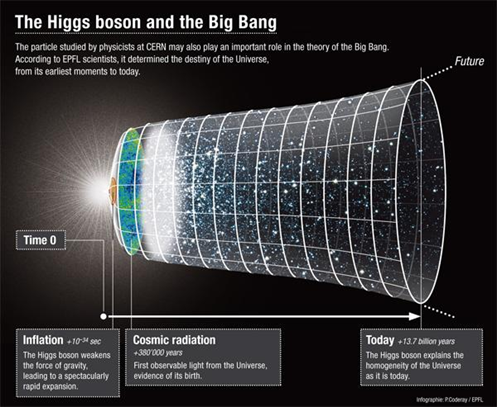The Higgs boson and the Higgs field are fundamental concepts in particle physics that play a crucial role in our understanding of mass and the structure of the universe.
Higgs Field
The Higgs field is a quantum field that exists throughout the universe. Proposed in 1964 by physicist Peter Higgs and others, this field is responsible for giving mass to elementary particles.

-
- Exists Everywhere: The Higgs field exists throughout the universe, providing a medium through which particles interact to gain mass. Unlike other fields, such as the electromagnetic field, the Higgs field has a non-zero value everywhere, even in a vacuum.
- Spontaneous Symmetry Breaking:

The Higgs mechanism involves spontaneous symmetry breaking, where the Higgs field transitions from a symmetric state (where particles have no mass) to a state that allows particles to acquire mass. This process is analogous to a pencil balancing on its tip; when it falls, it breaks symmetry and settles into a stable position.
-
- Interaction with Particles: Particles that interact more strongly with the Higgs field acquire greater mass. For example, electrons and quarks interact with this field, while photons do not, which is why photons remain massless and travel at the speed of light.
Higgs Boson
The Higgs boson is a fundamental particle in the Standard Model of particle physics, which describes the fundamental forces and particles that make up the universe. It is associated with the Higgs field, a scalar field that permeates all of space. The discovery of the Higgs boson was a significant milestone in physics, confirming the existence of the Higgs field and providing an explanation for how particles acquire mass.

-
- Key Characteristics of the Higgs Boson:
-
-
- Mass: The Higgs boson has a mass of approximately 125 giga-electronvolts (GeV/c²), making it heavier than many other elementary particles.
- Spin: It has a spin of 0, categorizing it as a scalar particle.
- Charge: The Higgs boson is electrically neutral.
-
-
- Discovery: The Higgs boson was discovered on July 4, 2012, by scientists at CERN using the Large Hadron Collider (LHC). Its detection was crucial for validating the Higgs mechanism, which explains how particles gain mass through their interaction with the Higgs field.
-
- Role in Mass Generation: The Higgs boson plays a crucial role in the Brout-Englert-Higgs mechanism, which explains how W and Z bosons (the force carriers for weak interactions) acquire mass. Without this mechanism, these particles would be massless, preventing the formation of atoms and thus life as we know it.
Importance of the Higgs Field and Boson
The implications of the Higgs field and boson are profound:
1. Foundation of Mass: They explain why fundamental particles have mass, which is essential for forming atoms, molecules, and ultimately matter in the universe.
2. Completing the Standard Model: The discovery of the Higgs boson completed the Standard Model of particle physics, providing a comprehensive framework that describes how fundamental particles interact via three of the four known forces (electromagnetic, weak nuclear, and strong nuclear).
3. Understanding Cosmic Evolution: The mechanisms involving the Higgs field are crucial for understanding events shortly after the Big Bang when particles began to acquire mass, leading to the formation of stars, galaxies, and other cosmic structures.

Conclusion
The Higgs boson is a fundamental particle that confirms the existence of the Higgs field, which plays a critical role in providing mass to elementary particles. Its discovery not only validates important theoretical frameworks in physics but also enhances our understanding of the fundamental structure of matter and the universe.
Reference Link-1: CERN
Reference Link-2: Nobel Prize in Physics
Spread the Word
